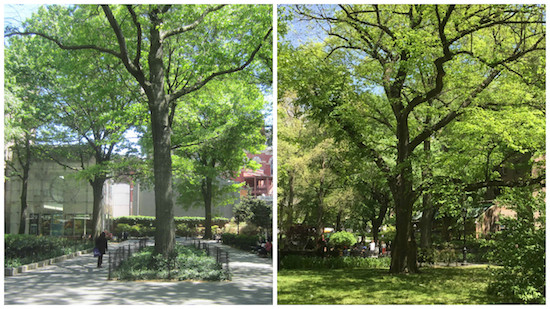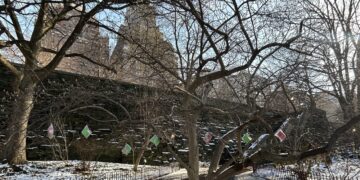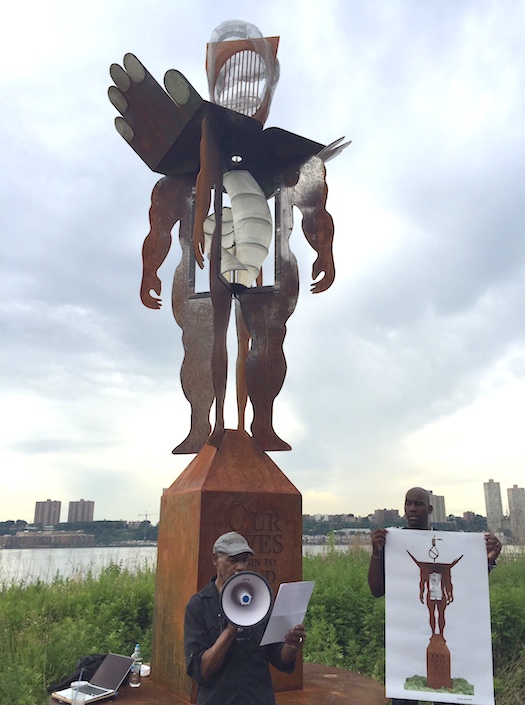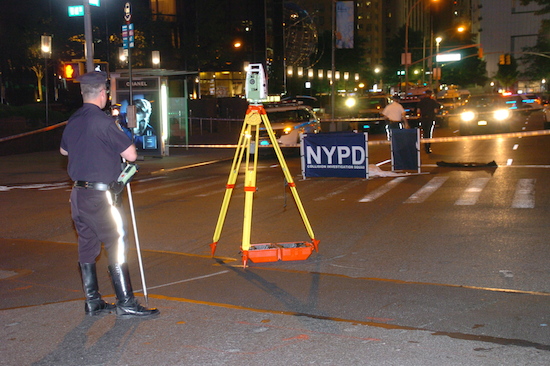
A Pin Oak (left) and English Elm (right) will not have to be destroyed, as originally anticipated. Photos courtesy of the Museum of Natural History.
The Museum of Natural History announced on Thursday that it’s figured out a way to save two large trees that were initially slated to be removed to make way for its new educational center.
The museum now expects to remove seven trees as part of the construction plan, as opposed to nine. The museum plans to plant more trees after construction so that the number of trees in the park actually rises.
“The trees are really important,” said AMNH Senior Communications Director Roberto Lebron. “Folks are really passionate about them and we understand that.”
A service road that was expected to cut through the area where the trees stand could be re-routed, the museum said, and builders will be able to conduct construction without removing them.
The Richard Gilder Center for Science, Education, and Innovation is still undergoing public reviews, and is expected to open in 2020. The museum says that about 80 percent of the 218,000-square-foot project will be located within the area currently occupied by the museum, with the new section to be built on the Columbus Avenue side of the museum. The museum has more about the project here.
“Saving these trees is the most recent demonstration of the Museum’s efforts to be a thoughtful community partner,” said Council Member Helen Rosenthal in a statement.
Defenders of Teddy Roosevelt Park, a group that had opposed the new building but is now working with the museum to make it more environmentally-friendly, had been pushing for the driveway to be moved to save the trees.
Rosenthal helped earmark more than $17 million for the museum in the city’s most recent capital budget (see page 7), drawing ire from an opposition group. Community United to Protect Teddy Roosevelt Park, another opposition group, said the museum shouldn’t be “getting public funds to destroy and annex public park land.” Rosenthal had no comment about the funding or criticism.








That’s a good start. When you stand and look at these huge, old trees, it’s impossible not to feel sorrow at the thought of them being cut down, no matter how good the reason. Now, let them figure out how to save even more!
And the spin is very disappointing: “The museum plans to plant more trees after construction so that the number of trees in the park actually rises.”
Rather than: “Huge, old trees cut down.”
Very happy about this! The AMNH expansion will be a great asset for UWS residents and visitors alike.
There is zero upside to the UWS from this. Just more visitors clogging our streets and standing around at noisy food trucks.
Those visitors bring lots of $$ into the local economy, don’t they?
Mostly visitors.
Trees have feelings too! Now, what about the promised Bull Moose Dog Run renovations that had money set aside over 2 years ago? That run, filled with great people and better dogs is a disgrace and an eyesore. The dust, dirt, rats, poor lighting, etc are an embarrassment to our neighborhood.